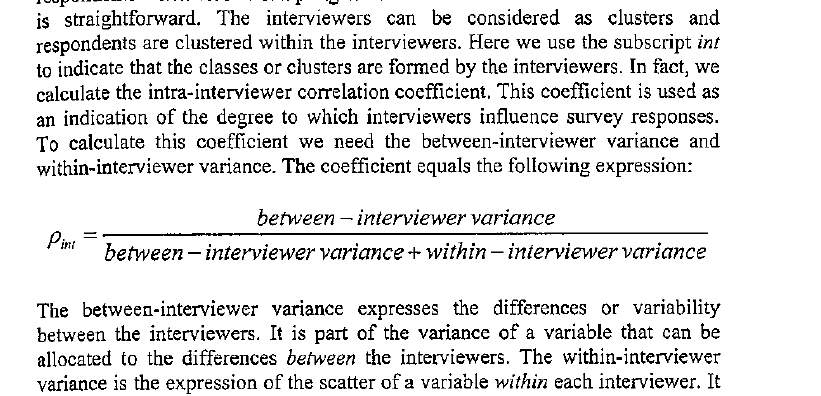I'm a little confused regarding the intraclass correlation coefficient I am now reading "Face to Face interviews " by loosveldt 2008 . He pointed out on page 218 that the intraclass correlation coefficient could be negative . Screenshot of the page
Could someone explain how the intraclass correlation coefficient could be negative ?


